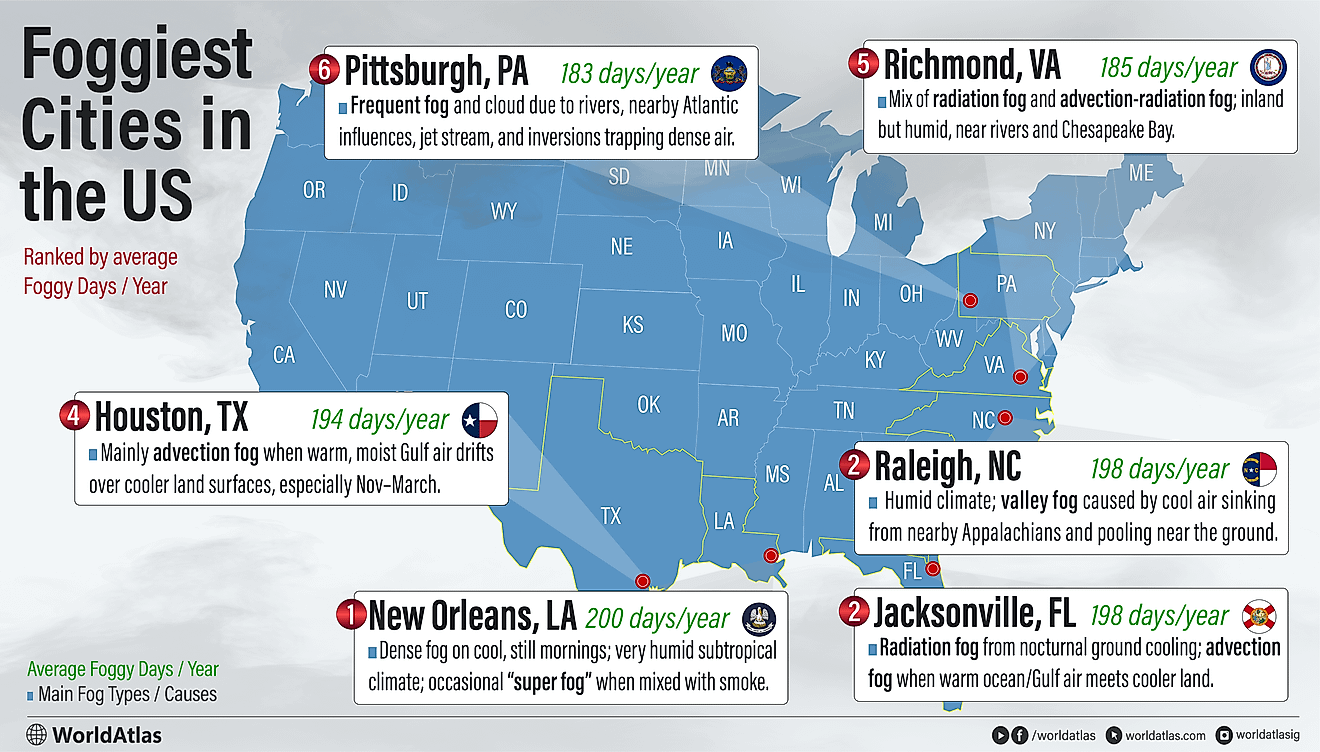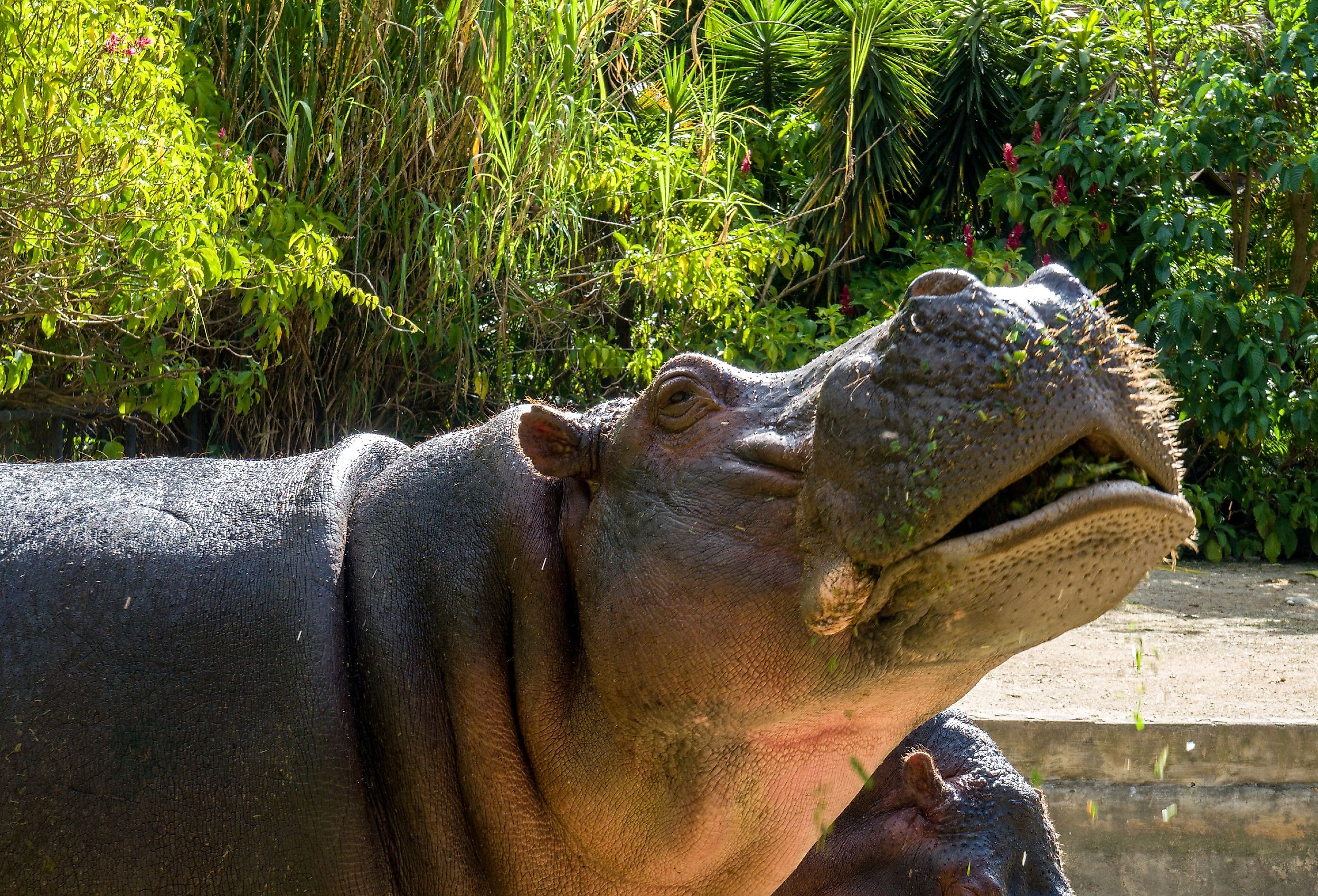
Pablo Escobar's Hippos are the World's Largest Invasive Species
In 1993, when Colombian drug lord Pablo Escobar was gunned down atop his Medellin safe house, he left behind a complicated legacy. Many residents loathed the violence and shameful industry he imprinted on the region (the ripples of which still exist today), while others appreciated his generous, Robin-Hood-esque contributions to the local communities. But one thing that no one could make heads or tails of were the four hippos that roamed his estate.
Escobar, who is the wealthiest criminal in history (at least in the classical sense of criminality), smuggled in all kinds of exotic animals to roam his makeshift zoo. While most of these were seized after his death, three female hippos, and one male, were left in limbo. In the thirty years since, the population has ballooned to upwards of 215 (i.e. the largest outside of Africa), causing complex ecological problems with no easy solutions. This is the ongoing story of the world's largest invasive species.
Where Are Pablo Escobar's Hippos?
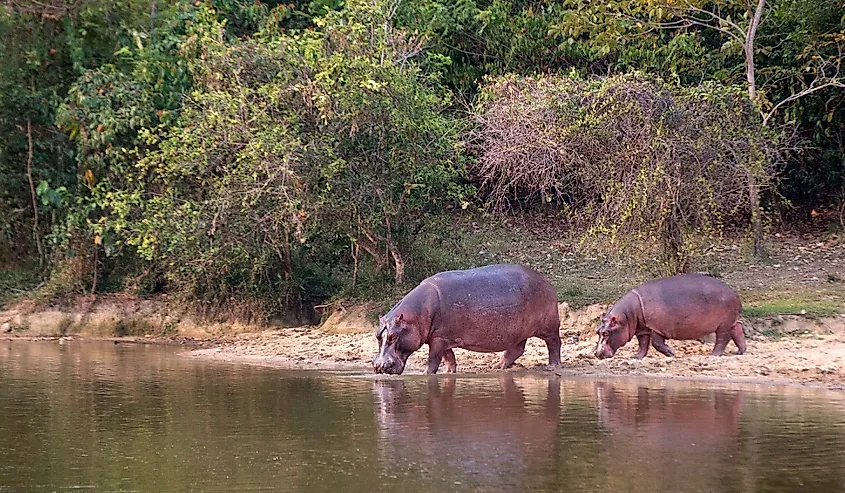
Colombia's "king of cocaine'' didn't just smuggle recreational drugs into the United States. He also illegally transported large African animals, including but not limited to: elephants, giraffes, and a herd of hippopotamuses, to Hacienda Nápoles. This once-opulent estate is in the municipality of Puerto Triunfo, in the Antioquia Department of Northwestern Colombia – roughly 155 miles (250 kilometers) Northwest of the country's capital city, Bogota, and 110 miles (177 kilometers) Southeast of the South American nation's second-largest city, Medellín. For a period of time after the collapse of Escobar's regime, the African hippos were contained on the 8 square-mile (20 square-kilometer) property. But eventually, they escaped and migrated up and down the Magdalena River. This ecosystem provided them with an almost tailor-made environment that allowed them to breed persistently.
Why Is Colombia's Hippo Population A Problem?
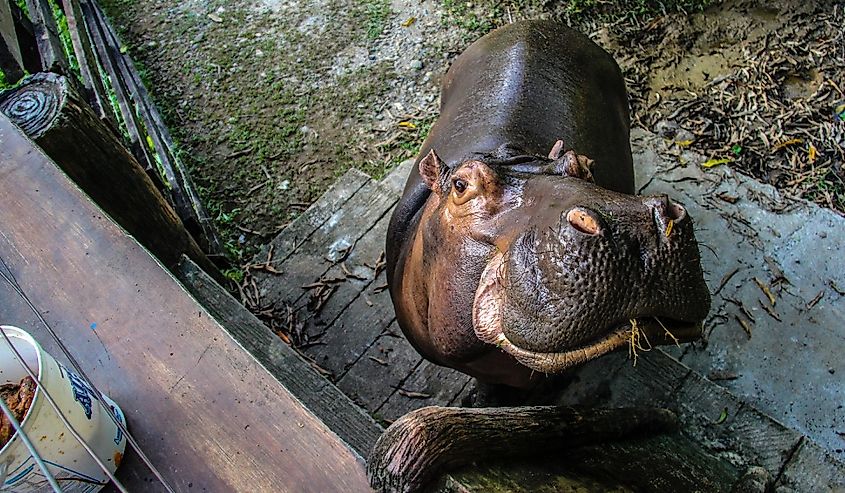
What began in the early 1980s as a herd of four imported, captive hippos, has since transformed into a dominant, free-range population that is so large that estimates have to be continually updated. In a poetic parallel, these massive invasive mammals are as polarizing amongst the Antiquia citizens as "El Patrón" was during his reign. Some people view them as a delightful novelty, tourist-drawing mascots, or in the case of some juvenile hippos, pets to feed and adore.
The public's first exposure to these creatures was generally positive. They either met them at Escobar's zoo, where he allowed buses full of children to wander freely, or discovered them later down the line, grazing in the wild. On the other hand, even though Colombia's rural countryside is a foreign environment, it is so well-suited for hippos that they are reproducing faster than officials can contain, which is causing damage to the ecosystem. Projections estimate that despite early mitigating efforts, population growth will accelerate over the coming two decades.
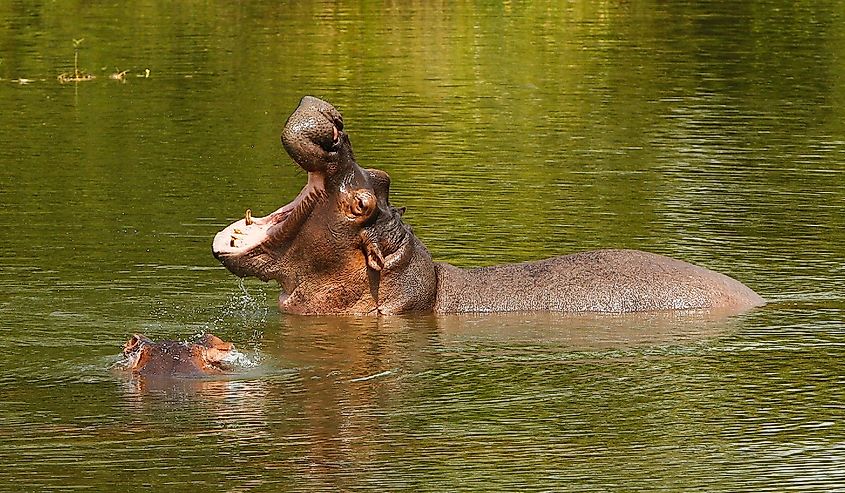
Escobar's hippos enjoy the slow-moving, shallow waterways, and lush vegetation of the Antioquia Department, which, unlike their home continent, doesn't experience droughts or house large predators that naturally regulate herd sizes. Instead, females in Colombia are becoming sexually active much earlier in life, and have been producing approximately one calf per year. These voracious, apex animals each consume upwards of 88 pounds (40 kilograms) of grass in a day, which adds a commensurate amount of waste to the ecosystem. The abundance of nutrients in the hippo's excrement fuels the growth of bacteria and algae in the fresh bodies of water, which in turn reduces the oxygen levels and kills the native fish.
It is also feared that the growing presence of these powerful creatures may put pressure on the equally large but docile West Indian manatees, as well as the neotropical otters and capybaras. As more of these potentially-aggressive animals expand into populated areas, problematic encounters with humans are inevitable. In 2020, a rancher was severely injured after an attack by a hippo. Though these unfortunate incidents have thus far been rare, escalations seem likely, given that hippos are the deadliest wild mammal on the African continent.
How Are Authorities Handling Colombia's Invasive Hippos?
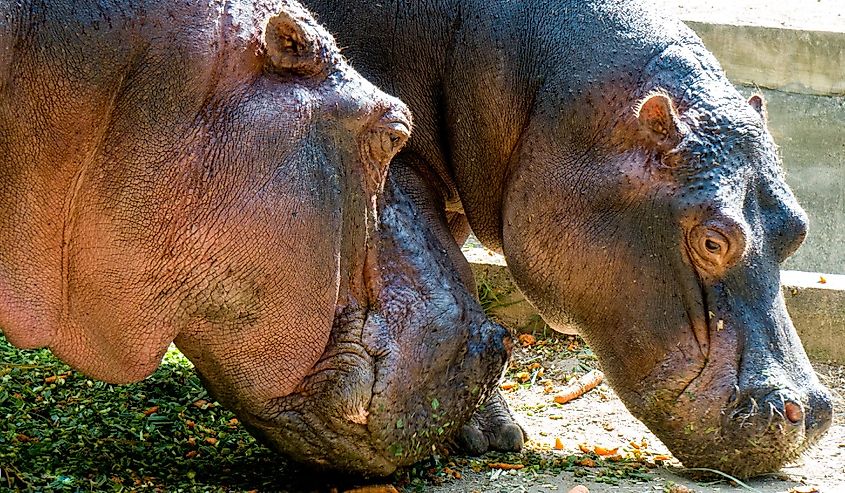
Colombia's environmental officials have been trying to implement a combination of culling, castration, and relocation strategies in order to keep the hippo population from ballooning out of control. The first option, while the easiest and arguably most-effective measure, is also the most controversial.
Controlled hunting is a common practice in government-managed wilderness areas, but it tends to draw backlash when used on such standout creatures. In 2009, a photo circulated showing a group of soldiers posing next to the carcass of an adult hippo named Pepe. This caused an uproar among animal-rights activists, and led to a court ruling making it illegal to kill hippos in Colombia. While some celebrate this immediate preservation of life, other environmental experts point out that by allowing the hippos to roam free, other types of death and destruction will result.
Castration became the next strategy, but it has proven to be a much more difficult and slow-going process. Officials have struggled to lure, contain, sedate, and perform the still somewhat-controversial procedure at a rate that can put a dent in the population growth. A related experiment involves the delivery of contraceptives via dart guns – a costly initiative, never before tested with these kinds of variables.
Relocation is often considered the most humane approach, but until recently, it has been hard to find takers for full-grown adult hippos. The governments of African nations are unwilling to risk disrupting the native species with the abnormal behaviors and foreign diseases that Escobar's legacy animals could present. However, as of 2023, a $3.5-million (USD) operation is underway that would remove 70 hippos, placing 10 in the Ostok Sanctuary of Northern Mexico, and 60 in an undisclosed location in India. At the time this strategy was developed, this was thought to be about half of the existing invasive population. Unfortunately, the most recent surveys (done by drone and on foot) raise the updated figure to between 181 and 215.
The only thing that all parties can agree on is that there is no clear solution for this novel and evolving scenario. All options present valid pros and cons, and none of them are projected to eradicate Colombia's hippos anytime within the next half-century. The late drug-smuggling-billionaire, Pablo Escobar, left quite a stamp on his home country of Colombia. His illegal profiteering was inexorably intertwined with violence and chaos, but the offshoot fruits of these deeds also had peculiar impacts. Escobar redistributed funds to his community and provided an exotic zoo for all to enjoy. While the rest of his estate was systematically disassembled after his death, his four pet hippos remained, flourished, and produced progeny that are steadily taking over the rural Northwest, thirty years on. There are many opinions but still few concrete decisions about how to deal with (or not deal with) the world's largest invasive species.











